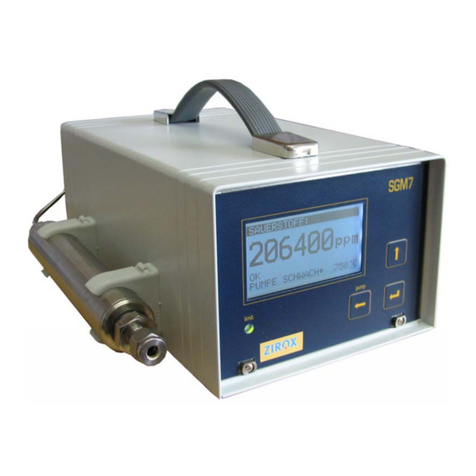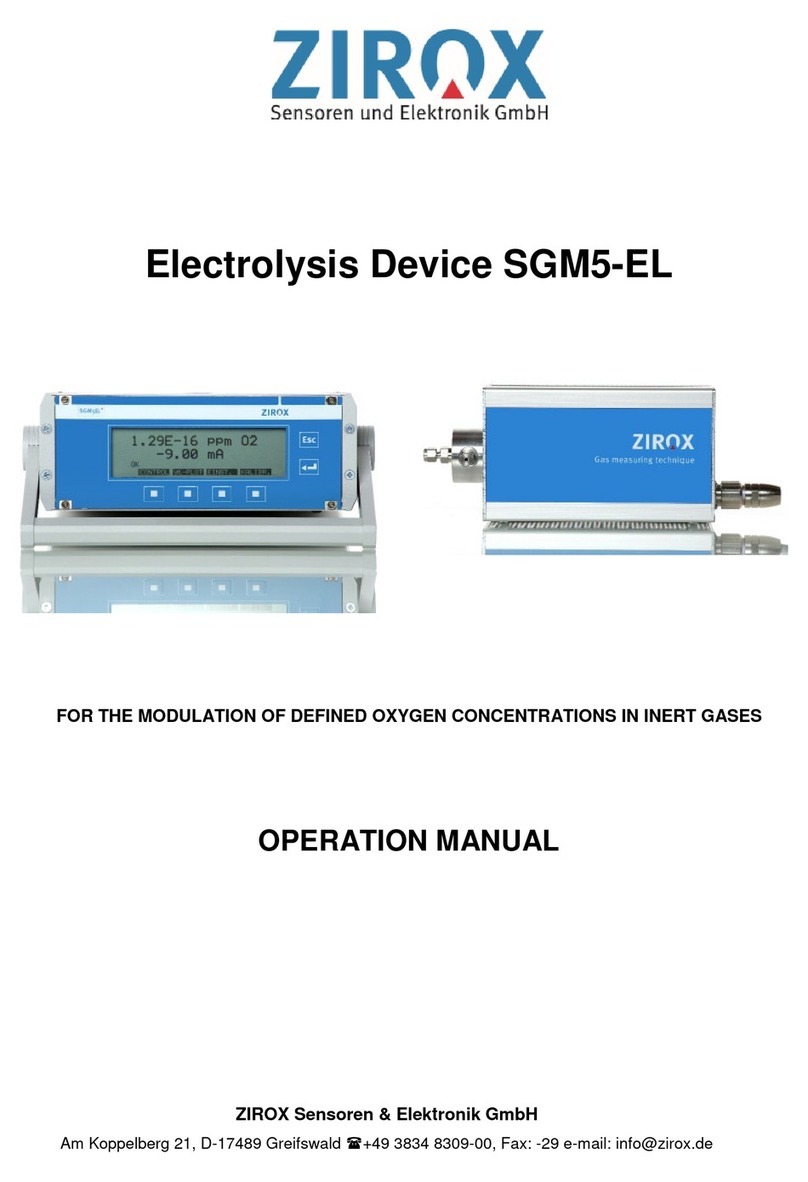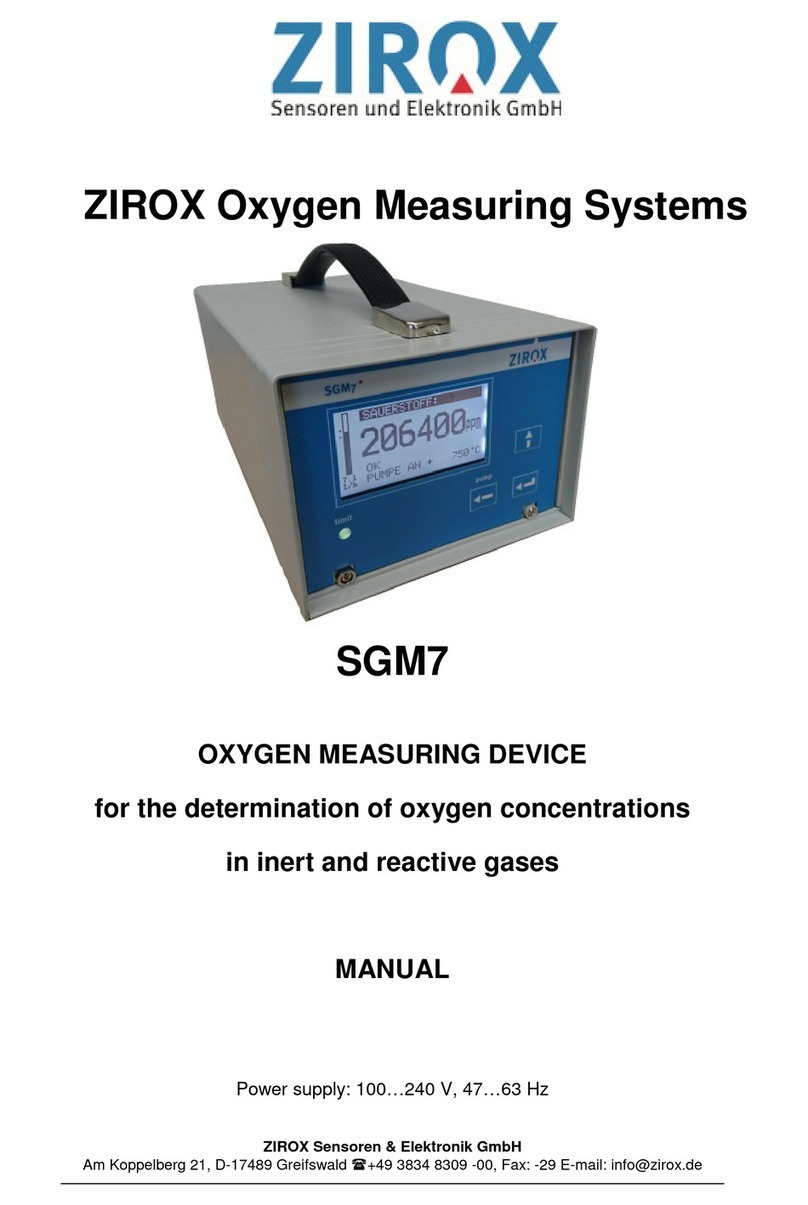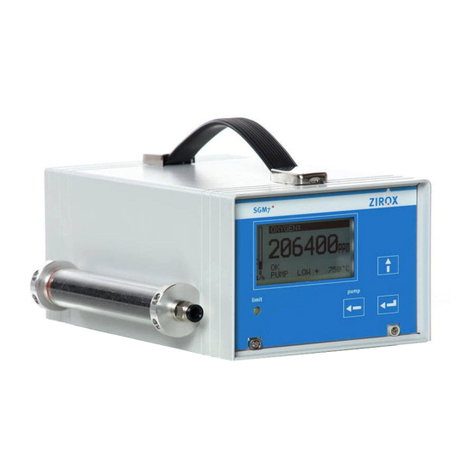
Measuring system XS22-E2010 2 Overview
7
XS22_E2010
2 Overview of the measuring system
The measuring system serves the measuring of the oxygen partial pressure
in vacuum. It consists of a probe and an integrated control and signal
processing electronics and an integrated control and evaluation electronics
(E2010). The probe can be directly installed in vacuum systems.
The electronic unit E2010, developed for panel mounting, provides the power
supply for ZIROX® sensors, evaluates signals and displays measuring
results in the form of a standard signal (4-20 mA) for process control.
The electronics realizes the following functions:
•Power supply and control of sensor heating
•Processing of the thermoelectric and cell voltage of the probe to the
oxygen concentration
•Output of the oxygen concentration as a standard signal
•Calibration
•Reference air supply by internal pump (option)
The probe is provided with a KF40-flange. Others on request.
Because of its specially adapted construction for vacuum applications, the
probe is not suitable for measurements of oxygen concentrations in the
percentage range. The relative error under normal pressure is > 20%.
The probe must not be used in gases with high thermal conductivity (e.g. H2,
He, NH3) at ambient pressure.
The sensor element of the vacuum probe consists of a partially closed solid
electrolyte tube. The reference electrode and a resistance heater are located
inside the tube. The measuring electrode outside the solid electrolyte tube
contains a thermocouple for the temperature regulation of the sensor
element. The protective tube as part of the probe is required for the
symmetric creation of a heating field and serves the protection of the sensor
from parasitic coating. Without a protective tube, the required probe
temperature cannot be reached and the thermal asymmetry increases
significantly.
Unlike probes, which are used under normal pressure, the vacuum probe is
not calibration-free. Reasons are the inside heater of the sensor tube used
in this probe and the energy removal of the heated sensor element
depending on the pressure and the ambient gases. Due to the lack of
isothermal electrodes, the validity of the Nernst equation is not given.
Usually, running the production unit with empirically determined sensor
signals is sufficient for the process management. The calibration by the
manufacturer is conducted under normal pressure as a calibration of the
asymmetry voltage (zero-point-calibration).
In operating status the ceramic front heats up to a temperature of
about 700 °C. Burn hazard!
danger































